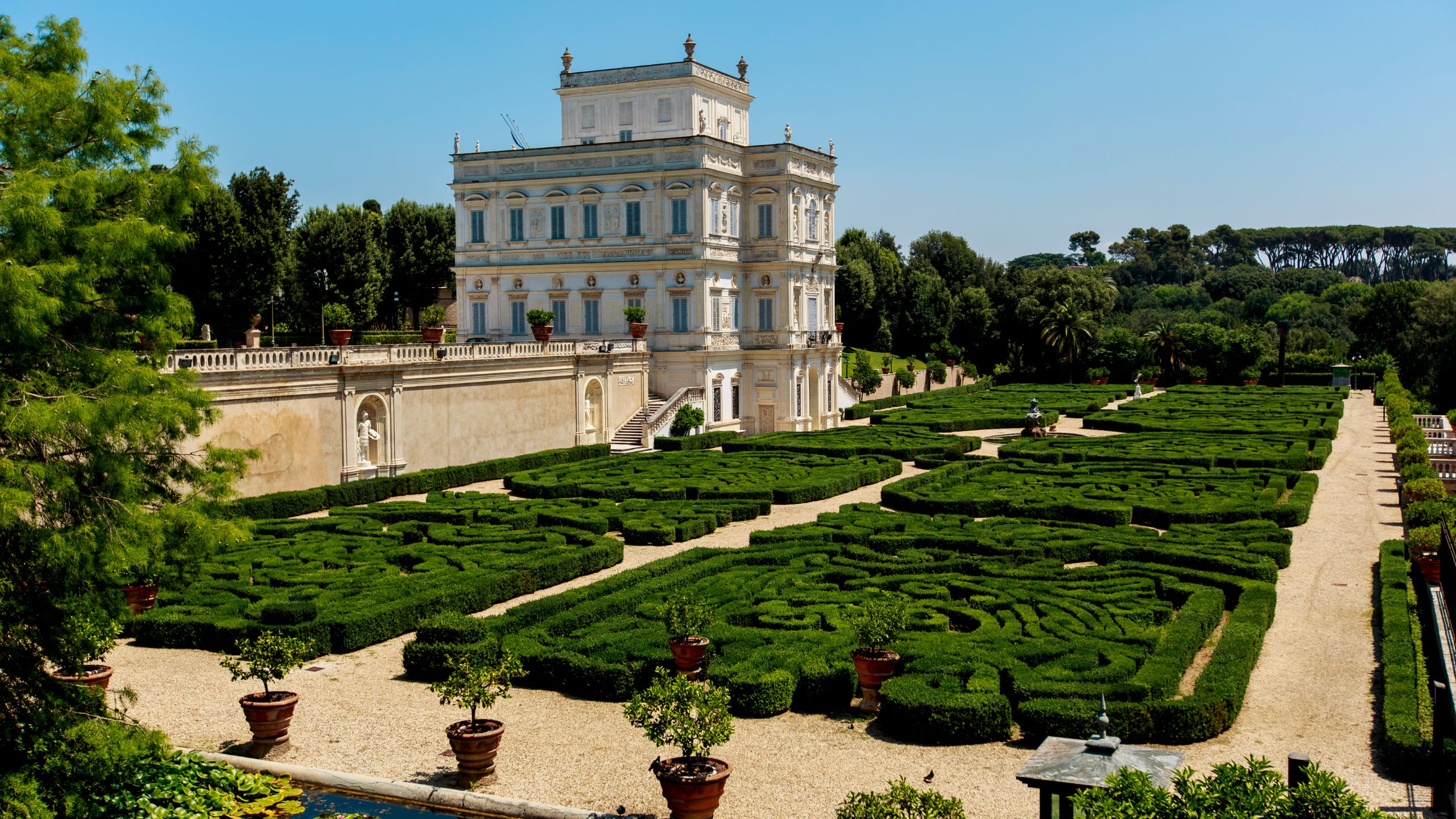EUR district: a mix of modernity, nature, shopping and night life
Result of the rationalist architecture, EUR is one of the most fascinating and discussed neighborhoods of Rome, also because of its origins.
Since the 30s, when Benito Mussolini ordered to build the new district, to a group of architects such as Piacentini, Vietti, Pagano, Piccinato and Rossi; he wanted to celebrate the 20th anniversary of the fascist parade in Rome. Its aim was to develop Rome towards the sea, through the imperial avenue, lately named Cristoforo Colombo street.
According to Mussolini’s idea, it should have been the Terza Roma: the style of the buildings had to remember the majesty and the lines of the monumental buildings of the imperial Rome.
The deadline to complete the works was the 1942, to give Rome its little Brasilia. In its new district, the city had to host the Universal Exposition of Rome (so the acronym EUR). What happened later is enough known. The original project is still incomplete, the works slowly stopped after the Second World War when lots of buildings were destroyed. What you can see nowadays is the result of the works restarted in 1952.
The architectural beauties of the EUR
The Palazzo della Civiltà Italiana, called Colosseo quadrato, the squared Colosseum, today is the fashion temple. It is made of marble, because of concrete and iron lack, caused by the penalties Italy had to pay after the war in Ethiopia. It represents the basic principle of Mussolini’s economical policy, in Italy. The building is very similar to Giorgio de Chirico’s works; there are fifty-four arches per each side and it is named Palazzo coi buchi, because of the windows are so similar to holes. It is the location of a famous fashion brand, with offices and an area set for public exhibitions.
The Palazzo dei Congressi, designed by Adalberto Libera, was completed in 1954. Libera had the capacity of being very independent in its creation, as he wanted to be different from the other designers of the time.
The colonnade was downsized giving more emphasis to the general volume of the building. The obelisk you can see, dedicated to Marconi, was set in 1959, to complete the European architecture of the area, for the Olympic Games, in 1960. Arturo Dazzi created the panels and high reliefs, from 1939 to 1959. The Basilica dei Santi Pietro e Paolo is situated in the highest point of the Eur district and you can see it from via Flaminia too. The designers worked on it were Rossi, Grassi and Foschini.
A natural corner surrounded by marbles
EUR district is not only a neighbourhood rich in offices and congresses. If you go near the lake, Parco Lago, you will get astonished discovering many citizens taking care of themselves, running around the lake through the cherry trees and the hard up scents. The artificial lake is also used by rowers to train themselves. The area is one 160.000 square meters large, fifty percent water and fifty percent park. During the last years, Rome has adopted a Japanese tradition. Between 1959 and 1960, 150 cherry trees arrived from Japan to decorate the park. Every March you can see the beautiful flowers on these trees, as it happens in Japan. Rome gives homage to the Spring event, celebrating the hanami, admiring flowers. Roman citizens interested in Japanese culture and tourists coming from the East usually meet in the park around the lake, to watch the show every year.
Shopping and antiquities: the EUR market
Rome is known to be the city of markets. The most famous is the one in Porta Portese, in Trastevere, but also EUR district has a market very interesting, even if less famous. It is Palombini Market, so called because it take place in front of the bar with the same name, every week end. It is not a district market, but a real exhibition. It is possible to buy ancient objects for very cheap prices, differently from what you can do in more famous markets such as the one in Trastevere.
You can also find some homemade objects and food, such as Mozzarella cheese from Bari and other Italian typical foods. You can buy olives or taralli on the Puglia stands, taste the strudel and the cornmeal mush, from Trentino. Also people that like shopping can find vintage artisans and sartorial products.
Enjoy Yourself in Eur District
If you go there with your children and you like games, Luneur is a masterpiece. It is the most ancient luna park in Italy, opened in 1953. After having been closed for some years, it has recently opened its gates again, offering new attractions.
There's the traditional Rome Eye and the Brucomela, and also new original attractions, such as the Sentiero degli Elfi, the Terra delle Farfalle and the Montagna dei Dinosauri, with full size models.
The predominant colour of the district is white because of the use of travertine and a particular type of stone that gives the impression of being in a district of bureaucrats. The impression can be the district gets silent during the night, but the majority of the discotheques of Rome is concentrated in the South, in the numerous buildings and panoramic terraces, where you can find a lot of young people. Night life here is very nice.
The Terrazze of Palazzo dei Congressi becomes a dance hall during the night, decorated by laser lights and vintage music, on some days of the week. During the summer, a lot of projections take place at the open air, offering a fantastic show, surrounded by the monumental buildings, watching the most famous films.



